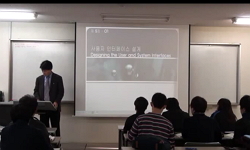It is very difficult to apply non-dispersive infrared sensor to detect the indoor air quality and maintain very low zero and temperature drift over long periods. Frequently manual zero setting and calibration are required. To solve the issues of zero ...
http://chineseinput.net/에서 pinyin(병음)방식으로 중국어를 변환할 수 있습니다.
변환된 중국어를 복사하여 사용하시면 됩니다.
- 中文 을 입력하시려면 zhongwen을 입력하시고 space를누르시면됩니다.
- 北京 을 입력하시려면 beijing을 입력하시고 space를 누르시면 됩니다.
A Method of Zero self-modification and Temperature Compensation for Indoor Air Quality Detection Based on a software Model
한글로보기https://www.riss.kr/link?id=A99625450
- 저자
- 발행기관
- 학술지명
- 권호사항
-
발행연도
2012
-
작성언어
English
- 주제어
-
자료형태
학술저널
-
수록면
1253-1257(5쪽)
- 제공처
-
0
상세조회 -
0
다운로드
부가정보
다국어 초록 (Multilingual Abstract)
It is very difficult to apply non-dispersive infrared sensor to detect the indoor air quality and maintain very low zero and temperature drift over long periods. Frequently manual zero setting and calibration are required. To solve the issues of zero and temperature drift of non-dispersive infrared sensor, a software model based on zero gas intensity, reference channels intensity, standard temperature, environmental temperature, temperature drift coefficient, etc. has been established to automatically modify and compensate the zero and temperature drift existing in the long-term continuous operation of the infrared sensor. The test result and long-term application indicate the detection precision of the instrument is less than 5%F.S in various changing environmental conditions. The average detection precision of carbon dioxide has been improved from 9.26% before comprehensive processing to 1.23% after processing, while the average detection precision of methane has been improved from 10.61% before comprehensive processing to 0.70% after processing. As a result, the disadvantages existing in many gas detectors including poor stability and short calibration cycle have been overcome, thus effectively improving the detection precision and stability of the instrument and reducing the maintenance cost.
목차 (Table of Contents)
- Abstract
- 1. INTRODUCTION
- 2. PRINCIPLE AND METHOD
- 3. RESULTS AND DISCUSSION
- 4. CONCLUSION
- Abstract
- 1. INTRODUCTION
- 2. PRINCIPLE AND METHOD
- 3. RESULTS AND DISCUSSION
- 4. CONCLUSION
- REFERENCES
동일학술지(권/호) 다른 논문
-
- 제어로봇시스템학회
- Kyoungwook Min
- 2012
-
- 제어로봇시스템학회
- Morten Ottestad
- 2012
-
Development of High Performance Shoes with Human Compatibility
- 제어로봇시스템학회
- Yasuhiro Hayakawa
- 2012
-
- 제어로봇시스템학회
- P°al Andre Nordhammer
- 2012




 DBpia
DBpia


